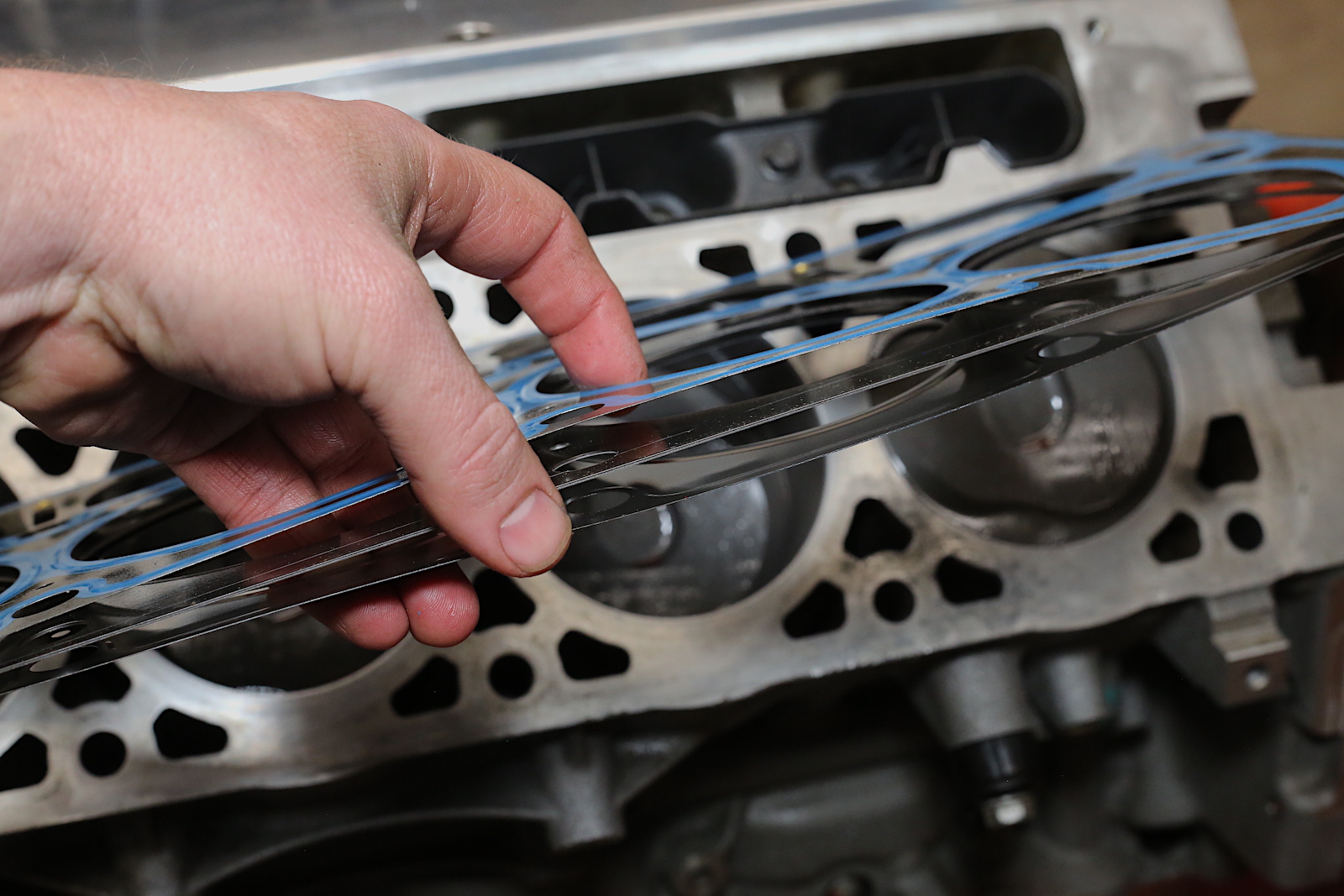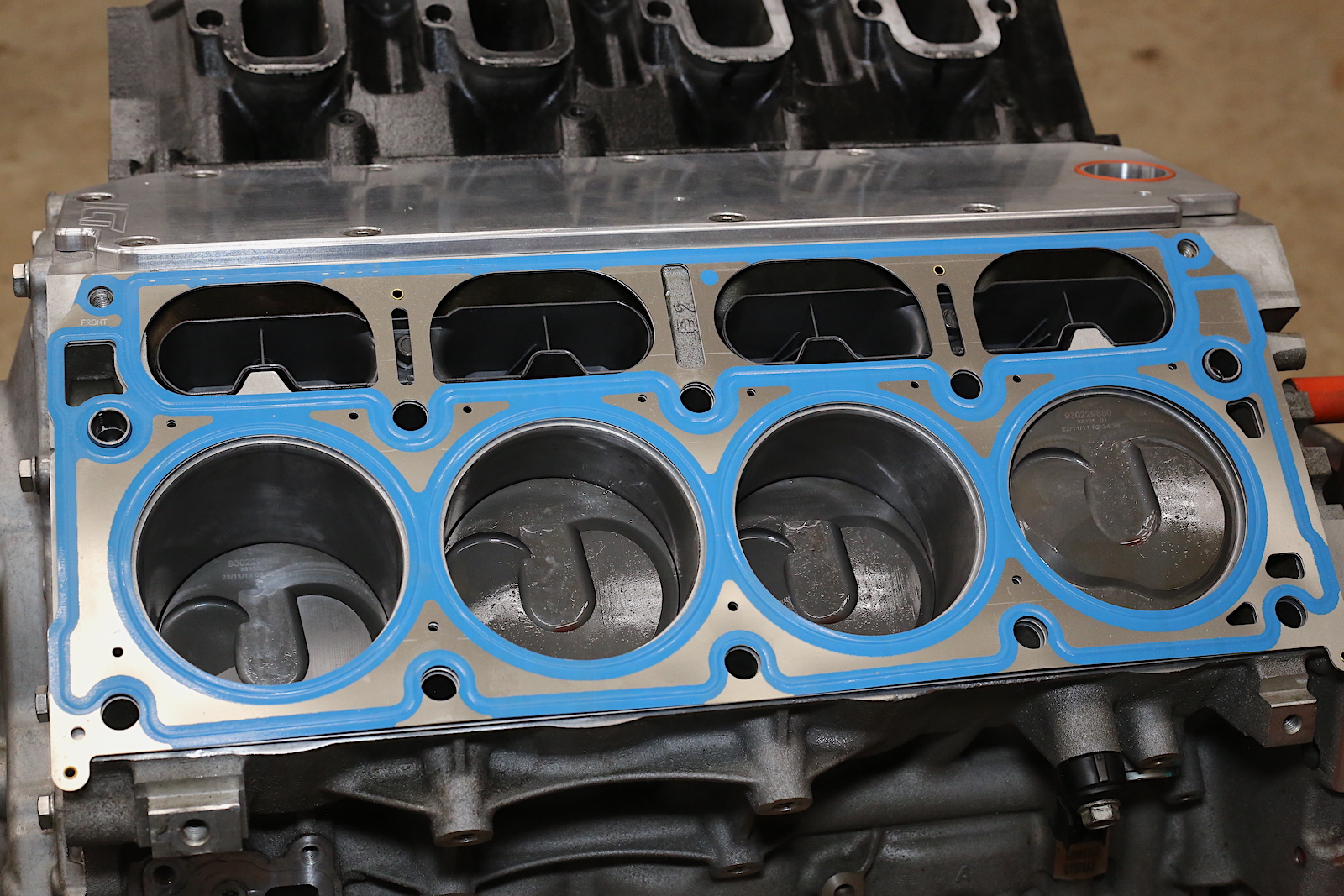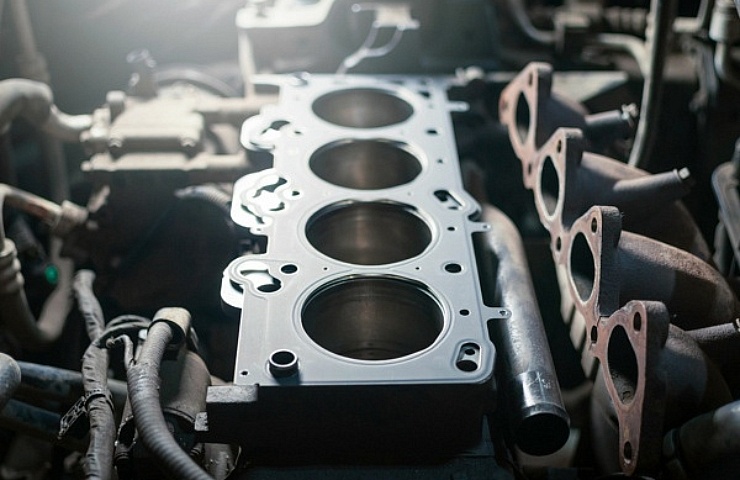Contents
Head gaskets seal the cylinder head to the engine block. Sealing the oil and water passages is typical gasket work; however, the combustion chambers require more effort. Two main types of gaskets are used in engines:
- Composition fiber/steel gaskets
- Multilayered steel (MLS) gaskets
MLS gaskets are less prone to failure, which is how they came to be commonly used in modern engines.
Unlike almost every other gasket on the engine, cylinder head gaskets endure significant abuse. They have to hold up against the extreme pressures inside the chamber while also sealing in the oil and water flowing through the heads. A blown head gasket is one of the biggest and most common causes of engine destruction.
Related: Complete Guide to Cylinder Heads
Reasons a Head Gasket Fails
A head gasket can fail in a few ways, and most require an immediate—and significant—repair to avoid a complete rebuild or replacement of the entire engine. Often, when a head gasket fails, it does so in more than one way. Also, a head gasket does not typically blow without warning signs. Here are some causes of failure and some symptoms to watch for.
Cylinder to Oil

Fel-Pro small block Chevy V-8 head gaskets
When the combustion chamber seal fails at an oil port, the combustion pressure pushes into the crankcase and pulls oil into the chamber. This results in blue smoke from the exhaust, loss of power, and extreme crankcase pressure, which will quickly damage the engine bearings.
Cylinder to Water
If the gasket fails into a water jacket, the combustion gasses will push into the cooling system and pull water into the combustion chamber. This results in overheating, loss of power, white smoke from the exhaust, and extreme pressure in the cooling system. The radiator hoses or radiator cap may fail, and if your vehicle has a catalytic converter, the water vapor can damage that as well.
Cylinder to Cylinder
If the gasket between two cylinders fails, compression will be drastically reduced, resulting in significant power loss. There are usually no visual signs, like from the exhaust, but the engine will run roughly, have less power, and misfire.
Cylinder to Outside
Less commonly, the cylinder seal can fail to the outside of the engine. This generates clicking or ticking noises that sound like an exhaust leak. There is significant power loss, and the engine will run very rough. You may see soot or smoke from the area where the seal failed.

A typical composite fiber head gasket looks like a paper gasket but has a steel core in the center.
Related: How to Find and Fix Exhaust Leaks
Water to Oil
Another common failure is when the seal between an oil port and water jacket fails. This yields milky oil and discolored coolant. If your engine has green coolant, it will turn army green. If you have orange or pink coolant, it will turn brown. A foamy sludge typically forms on the bottom of the radiator cap as well. The oil will look like a chocolate milkshake. Overheating and bearing damage are possible with this failure.
Water to Outside
A water jacket seal can fail to the outside of the engine, resulting in a visual leak of coolant around the head failure point. The engine will overheat quickly.
Oil to Outside
This is the only head gasket failure that does not require an immediate emergency repair, as the engine will just leak some oil. You may have reduced oil pressure, which can cause major problems and require more attention to the oil level until a fix is made.
Underlying Causes
Overheating is the number one cause of failure by far. A low coolant level, failing water pump, damaged radiator, or collapsed hoses can all cause an engine to overheat. The high heat causes the gasket material to reach a critical temperature and leads to failure.

Most modern engines have switched to MLS head gaskets, which are made from multiple layers of steel that have embossed areas and are riveted together.
Detonation inside the combustion chamber also causes gasket failure. This is usually caused by poor-quality fuel or bad timing settings in stock engines. High-performance engines may fail at the head gasket from cylinder pressure being too high.
Shop now for head gasketsOverheating even once can kill an engine, so you need to get the vehicle to a repair shop as soon as possible and avoid running the engine until it is repaired. Driving with a blown head gasket is a surefire way to kill your engine.
Head Gasket Repairs
For short-term repairs, liquid head gasket sealers often work quite well, especially when the gasket fails between the water jacket and the combustion chamber. When used as directed, they often give you a few hundred miles so that you can get your vehicle home to be properly repaired.
The correct repair requires removing and replacing both the cylinder head and gasket. However, if the engine overheated—which is usually how you know the failure happened in the first place—the head and block need to be inspected to determine if there is major damage. The head might need to be shaved, as the mating surface can warp when overheated. There may be a crack in the block or head as well.
An experienced home mechanic can easily perform the work in the driveway. If you are not experienced with these major repairs, taking the head to a machine shop for examination is highly recommended.
How to Prevent a Failure
Routine maintenance is the key to failure prevention. Check your oil and coolant levels regularly, and monitor the engine temperature and oil pressure. If you see white smoke from the exhaust after the engine’s warmed up, you have a problem that needs to be addressed immediately.

This GM Gen V LT-series engine has an MLS gasket. The blue areas are Viton rubber, which helps ensure a good seal. MLS gaskets are very durable, but they can still blow out.
Check the radiator and heater hoses for leaks and impending failure. Look for soft spots, bulges, worn areas, and loose clamps. Many times, head gasket failures are the result of a coolant leak or failure. As with so many things, a little maintenance goes a long way.
Cost to Replace a Head Gasket
Repairing a head gasket can cost anywhere from $1,000 to $3,000, depending on the damage. If the failure was caught before the engine overheated too far, the engine was shut down quickly, and the vehicle was towed to the repair location, $1,500 to $2,000 is a reasonable expectation. Some engines are more difficult to access, so even a simple failure can cost much more.
Shop now for head gaskets




